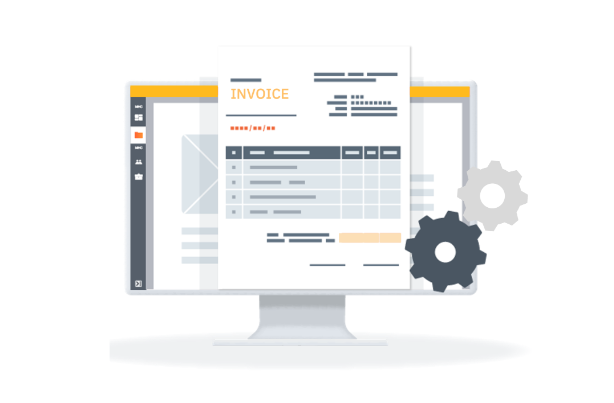Using automated invoice processing solutions can help your business in many ways. It reduces labor costs, improves employee productivity, and helps avoid errors. It also minimizes issues with supply, quality, and availability. In addition, invoice processing automation can help you save time. These benefits can make invoice processing a more efficient and profitable process.
Reduces labor costs
Automation of invoice processing processes can drastically cut the labor costs associated with processing these invoices. The accounts payable department that processes 5,000 invoices each month can save $55,650 per month or $667,800 per year. Additionally, automation can save time by eliminating manual data entry. It also allows finance teams to focus on other accounting tasks, such as order reconciliation.
AP automation allows companies to upload invoices to be processed. It then generates details for each invoice, which can be viewed by the finance team. This eliminates the need for human error in invoice processing. Furthermore, it allows the finance staff to quickly and easily correct any inconsistencies or inaccuracies that may exist in invoices.
Invoice processing automation can reduce labor costs and increase productivity. It also removes the risk of misfiled invoices being stuck on the desk of a busy approval. Invoice processing software can be integrated with other systems that handle billing and inventory ordering. With automated invoice processing, businesses can enjoy a better cash management, improved vendor relations, visible and audited payments, and a reduction in labor costs.
Another benefit of automated invoice processing is that it reduces the chances of errors and lost invoices. Because machines don’t make mistakes like humans, the process is much smoother and more accurate. Additionally, automated invoicing allows companies to save invoices in a digital format, which is particularly helpful when handling offshore accounts.
Another benefit of invoice processing automation is that it can drastically cut costs on infrastructure. Companies can save millions of dollars a year by automating these processes. These include the cost of accounting software, ERP systems, and fraud detection tools. In addition, the cost of processing paper invoices can be high depending on the number of invoices they process each year.
Automated invoice processing can also reduce late payment penalties. Accounts payable departments that have a highly automated workflow can pay up to 90 percent of invoices on time. Automated invoice processing systems can identify supplier information and line item data, automatically matching them with POs or proof-of-delivery receipts. Automation can also help accounts payable departments track and resolve errors in an organized and systematic manner.
Increases employee productivity
Invoice processing automation (IPaaS) is a great way to automate the routine tasks associated with invoice processing. It allows businesses to focus on the culture of the company, instead of rote-processing tasks. Moreover, it allows businesses to save up to 81% of processing costs and 73% of the cycle time. In addition, automation saves companies approximately the equivalent of one-third of the salary of an onshore or offshore employee.
Manual invoice processes are prone to errors and delays. Additionally, paper documents can get lost or damaged, causing delays in payments and delivery to suppliers and vendors. By automating invoice processing, businesses can ensure timely delivery and strong relationships with their stakeholders. Furthermore, automated invoice processing reduces the risk of accounts payable fraud. It is estimated that one-fifth of organizations experience some form of accounting or procurement fraud each year. In addition to this, over 80 percent of businesses have experienced payment fraud. Because manual processes make it easy for fraudsters to manipulate data, companies should automate their processes to ensure greater accuracy and efficiency.
With automated accounts payable systems, organizations can decrease the time spent on manual data entry by as much as 95 percent. Using advanced optical character recognition (OCR) technology, these systems can index scan invoices and eliminate the need for human intervention. In one case study, OCR-based automation eliminated 95 percent of invoice-related data entry.
Manual and semi-automated AP processes can take days, even weeks, to complete. In addition to manually matching invoices to supplier terms, employees have to combine multiple orders into a single invoice. This process can be time-consuming and may result in missed discounts and late fees. Furthermore, it can strain relationships with suppliers.
Increased employee productivity is a major benefit of invoice processing automation. Not only does it reduce manual errors, it helps optimize resource usage and improves cash flow. Automation can also reduce the number of suppliers needed, allowing businesses to save more money. By eliminating manual processes, employees can focus on more important activities, such as managing supplier relationships and catching up on invoice volume.
Reduces errors
Automating invoice processing processes can reduce errors in a number of ways, including reducing manual steps and ensuring a more accurate process. It can also lead to better cash flow management and better insight into the company’s financial performance. Additionally, automated systems allow the AP team to work remotely and reduce costs. Moreover, eliminating paper from the invoice processing process can reduce the need for office space and help protect the environment. It can also improve enterprise connectivity.
There are several challenges associated with manual invoice processing, including a high rate of exceptions and errors. Without software, this is a complex and time-consuming process, requiring double-checking and follow-up. Additionally, manual invoice processing processes can take longer than automated processes. Ultimately, invoice processing automation can save time and increase profitability for businesses.
Automated invoice processing starts by turning paper invoices into “business-ready” information. The use of intelligent OCR and scanning eliminates manual data entry, which increases accuracy and saves time. Additionally, a digital workflow provides an audit trail of all steps, allowing AP staff to identify any issues, address approval bottlenecks, and respond to vendor inquiries.
Invoice processing automation also reduces the cost per invoice, with costs falling by up to 50%. By eliminating human error, it enables a smoother workflow, reducing the time spent on processing invoices and improving cash flow. Automated invoice processing systems also ensure accurate calculations, reducing error rates and fraud.
Automation of invoice processing improves the efficiency of the accounting staff and reduces accounting overhead. With less manual work and more accurate invoice processing, companies can focus on more important tasks. Automation improves audit readiness, reduces errors, and reduces late payments. Further, automation helps prevent fraud and improve cash flow management.



